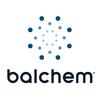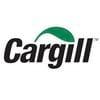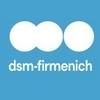Determining the most effective shade system based on physiological and productive performance of Bos taurus bulls in a subtropical climate
Published: October 20, 2025
Source : Leonel Avendaño-Reyes 1, Ulises Macías-Cruz 1, M. Ángeles López-Baca 1, Vielka J. Castañeda-Bustos 1, Arnulfo Vicente-Pérez 2, Miguel Á. Gastélum-Delgado 3, José A. Aguilar-Quiñonez 3, Peter Robinson 4, José A. Roque-Jiménez 1, Miguel Mellado 5, Jorge H. Siller 6.
Summary
Author details:
1 Instituto de Ciencias Agrícolas, Universidad Autónoma de Baja California, Mexicali 21705, Baja California, México; 2 Benemérita Universidad Autónoma de Puebla, Complejo Regional Centro, Tecamachalco, Puebla 75470, México; 3 Facultad de Agronomía, Universidad Autónoma de Sinaloa, Culiacán, Sinaloa 80000, México; 4 University of California, Animal and Dairy Sciences Department, Davis, CA 48900, USA; 5 Departamento de Nutrición Animal, Universidad Autónoma Agraria Antonio Narro, Saltillo 25315, Coahuila, México; 6 Empresa SuKarne, Culiacán, Sinaloa 80300, México.
The aim was to identify the best of four shade systems based on the physiological and productive responses of Bos taurus bulls in a subtropical climate. A total of 804 bulls from Bos taurus, Bos indicus, and their crosses were randomly allotted to 12 pens (n=67 bulls/pen), which were randomly assigned to one of four treatments (3 pens/treatment): (1) Conventional shade (CSS), (2) double shade (DSH), (3) dome without fans (DNF), and (4) dome with fans (DWF). Five Bos taurus bulls per pen were randomly selected for physiological evaluation and collection of blood samples. Productive responses included feedlot performance, carcass traits and meat quality. The climate was judged as “moderate heat stress”. Morning respiration frequency was lower in CSS and DWF bulls than in DNF and DSH bulls, but was the lowest in DWF bulls by the afternoon. Bulls under DWF had the lowest surface temperatures of head, loin, shoulder, rump and belly, as well as the highest triiodothyronine concentrations. Glucose concentration tended to be the lowest in DNF bulls, while chloride concentration tended to be higher in CSS bulls than in DSH and DNF bulls. The DNF bulls had the highest feed intake, while DWF and DSH bulls had better feed efficiency than CSS bulls. Marbling was higher in CSS and DSH than in DNF bulls, and meat from CSS bulls had less lightness than that from DNF and DWF bulls. Therefore, the most effective shade for Bos taurus bulls under moderate heat stress is the dome with fans as it improved thermoregulation, metabolic activity and feed efficiency.
Keywords: Shades, Bos taurus cattle, Heat stress, Physiological variables, Feedlot performance, Carcass.
Abstract published in International Journal of Biometeorology. https://doi.org/10.1007/s00484-025-02945-0.
Related topics:
Mentioned in this news release:
Recommend
Comment
Share

Would you like to discuss another topic? Create a new post to engage with experts in the community.









